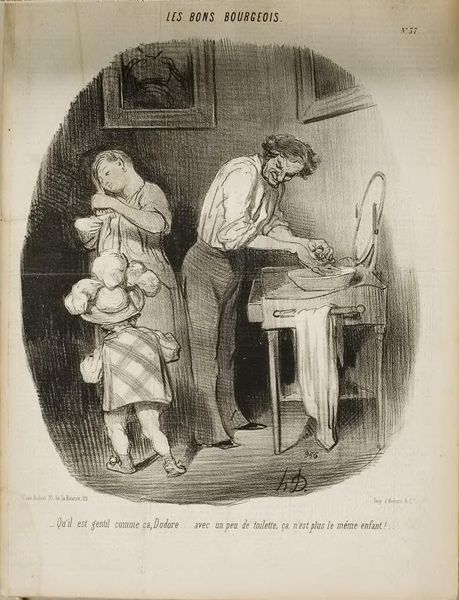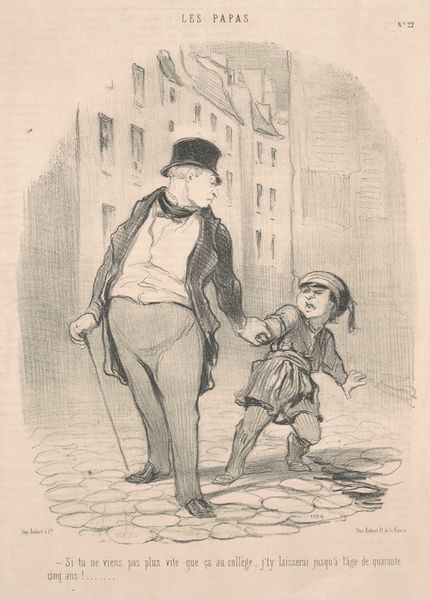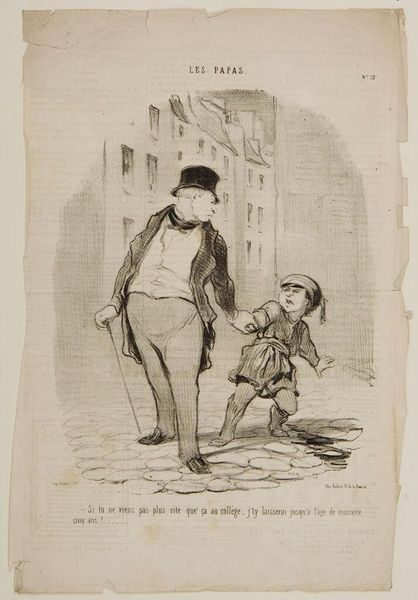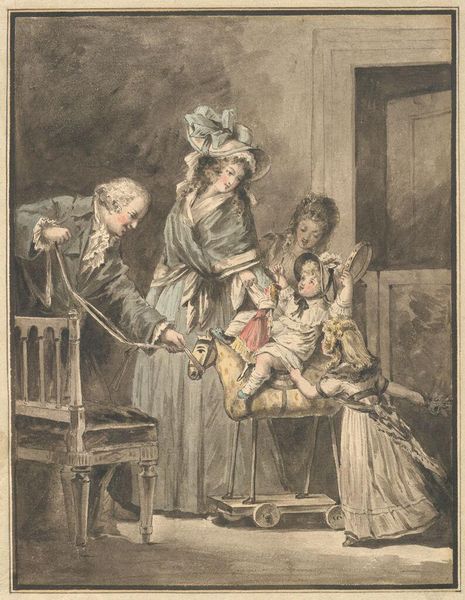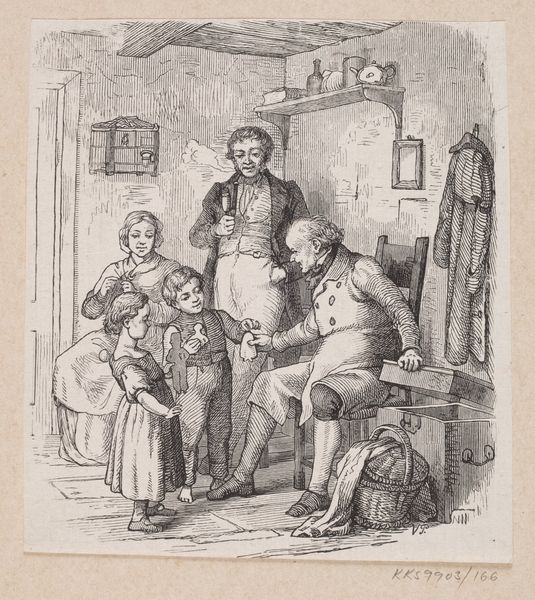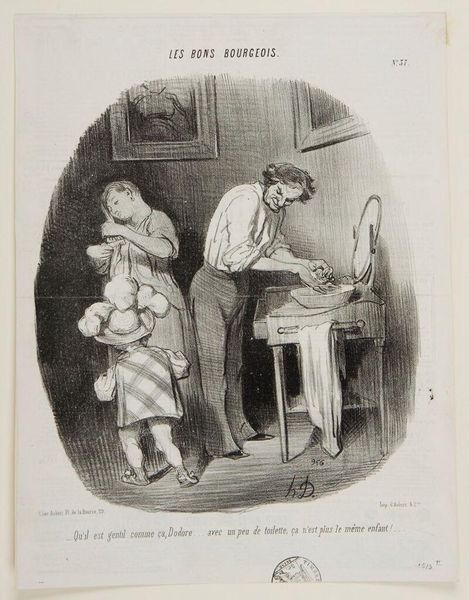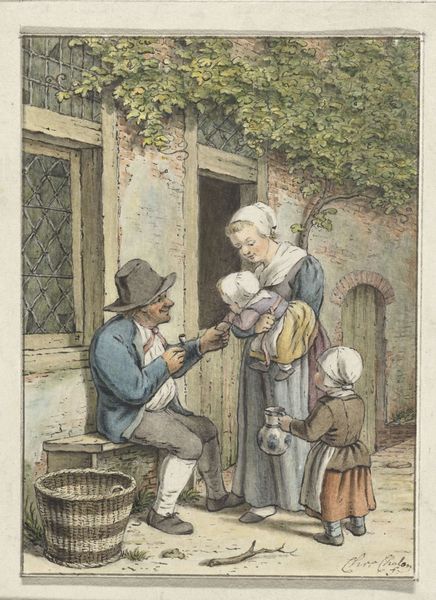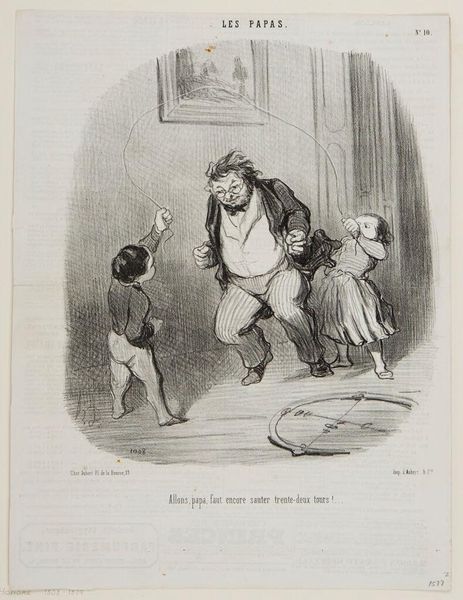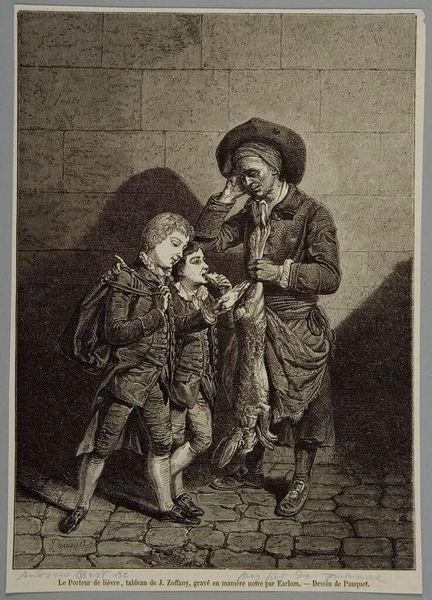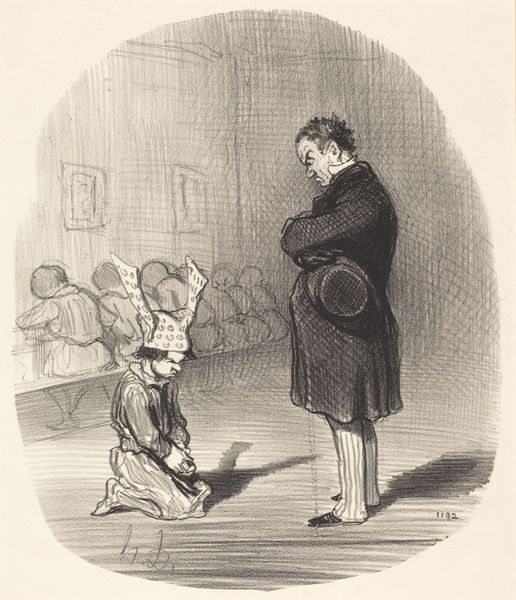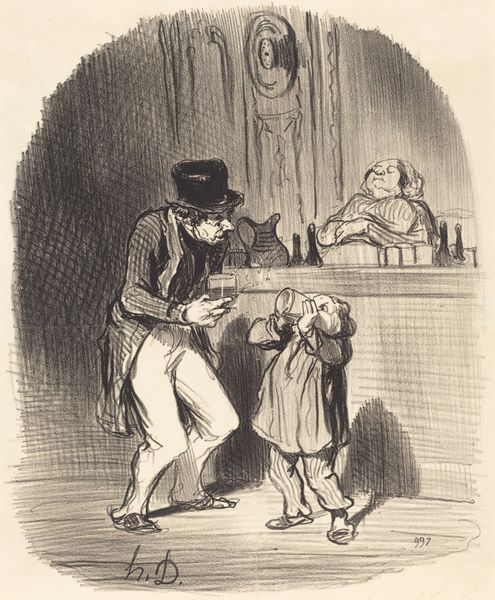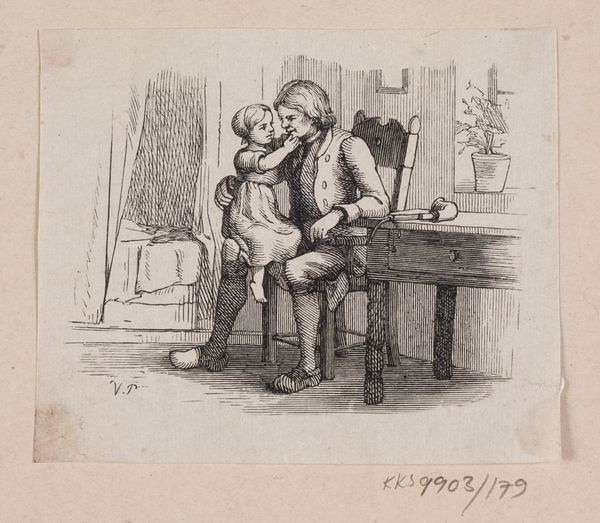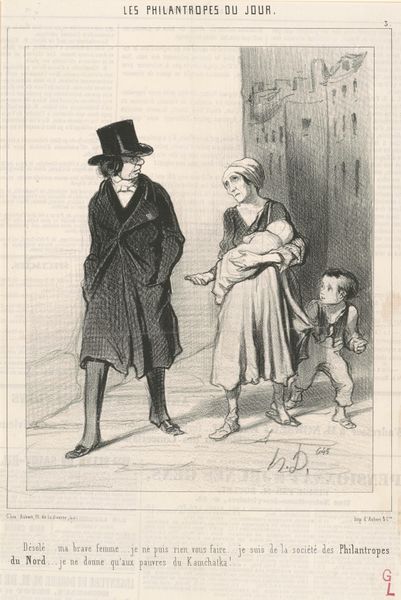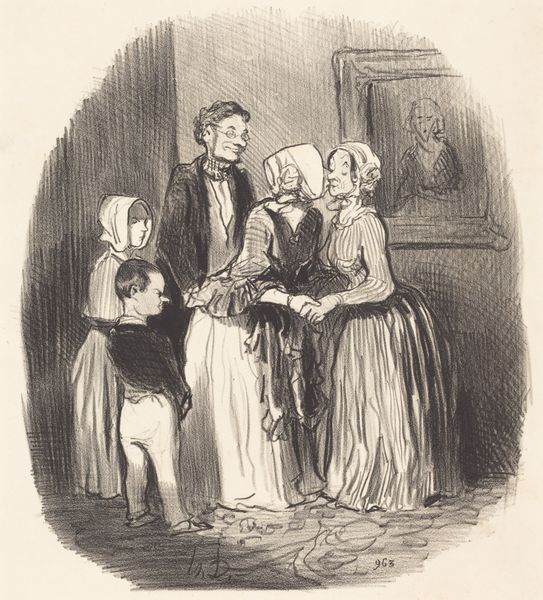
Copyright: Public Domain: Artvee
Curator: Arthur Rackham created this illustration titled "He Gave Each a Large Piece of Gingerbread" around 1929. It's executed with pencil and ink on paper. It looks like a preliminary sketch for something larger. What is your impression? Editor: Well, my immediate sense is one of confined generosity. The setting appears to be some kind of stone enclosure or cell, but there’s this man, dividing treats amongst these two boys. Curator: Yes, and Rackham’s delicate lines do a fantastic job describing form with remarkable efficiency. Note the angles that create depth within the confined architecture, and how they make us acutely aware of the negative space within the chair itself. He is brilliant at establishing volume, while employing very little shading! Editor: Absolutely, though I'm struck by what the illustration implies about the society in which this scene is set. A wealthy gentleman is redistributing wealth, however modestly, inside what looks to be some sort of debtors’ prison, poorhouse, or workhouse – which calls into question what is "given," in terms of social class and obligation in this period of time. Curator: It also points towards an economy of form, perhaps a comment on excess, in relation to visual construction. The figures' posture establishes compositional tension within the rectangle of space. This creates emotional space through the very limited media. What appears sentimental, could be the result of semiotic intention. Editor: Perhaps. But also think about the purpose of illustration at this time; consider the influence of photography on the decline of other forms of popular image-making, while also understanding this specific artist’s market as the niche, specialized subject of "fairy paintings". The illustration arguably takes on renewed value in the broader economic and aesthetic landscape. Curator: Fair points, but his technique remains uniquely fascinating. He reduces three figures to basic lines and geometric shapes with no modeling – other than some very small use of color washes. Notice the light pencil work; each decision contributes toward both linear clarity, and atmospheric openness. Editor: True. And looking at this more broadly, in the 1920s in Britain, illustrators became key social commentators; what a medium, a light, minimal pencil sketch could convey about privilege, labor, and poverty! Rackham provides insight on what "giving" actually means—and it's anything but a selfless act. Curator: Thank you. You offered fascinating insights from a different yet still highly complimentary view. I'm off to reflect on it all a bit more. Editor: A pleasure. There’s so much embedded within seemingly simple forms of image-making to consider, no?
Comments
No comments
Be the first to comment and join the conversation on the ultimate creative platform.
